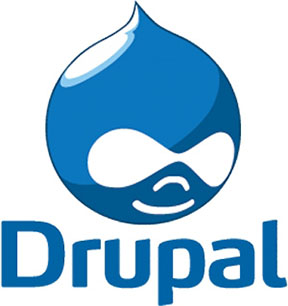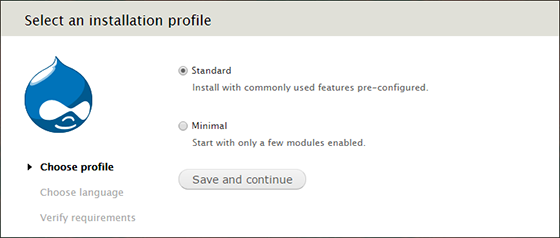
In this tutorial, we will show you how to install Drupal on CentOS 8. For those of you who didn’t know, Drupal is an open-source and one of the most popular PHP-based Content Management System (CMS) platforms for building personal blogs or big corporate websites. It has thousands of templates and plugins that are mostly free to download and install. Due to the stability of the base, the adaptability of the platform, and its active community, Drupal remains a popular choice after more than a decade on the scene.
This article assumes you have at least basic knowledge of Linux, know how to use the shell, and most importantly, you host your site on your own VPS. The installation is quite simple and assumes you are running in the root account, if not you may need to add ‘sudo‘ to the commands to get root privileges. I will show you the step-by-step installation of Drupal on CentOS 8.
Prerequisites
- A server running one of the following operating systems: CentOS 8.
- It’s recommended that you use a fresh OS install to prevent any potential issues.
- SSH access to the server (or just open Terminal if you’re on a desktop).
- A
non-root sudo useror access to theroot user. We recommend acting as anon-root sudo user, however, as you can harm your system if you’re not careful when acting as the root.
Install Drupal on CentOS 8
Step 1. First, let’s start by ensuring your system is up-to-date.
sudo dnf clean all sudo dnf update
Step 2. Installing a LAMP server.
A CentOS 8 LAMP server is required. If you do not have LAMP installed, you can follow our guide here.
Step 3. Installing Drupal on CentOS 8.
Now we download the latest Drupal version from the Drupal official site:
wget https://ftp.drupal.org/files/projects/drupal-9.1.0.zip unzip drupal-9.1.0.zip mv drupal-9.1.0 /var/www/html/drupal
We will need to change some folders permissions:
chown -R apache:apache /var/www/html/drupal
Step 4. Configuring MariaDB for Drupal.
By default, MariaDB is not hardened. You can secure MariaDB using the mysql_secure_installation script. you should read and below each step carefully which will set the root password, remove anonymous users, disallow remote root login, and remove the test database and access to secure MySQL:
mysql_secure_installation
Next, we will need to log in to the MariaDB console and create a database for Drupal. Run the following command:
mysql -u root -p
This will prompt you for a password, so enter your MariaDB root password and hit Enter. Once you are logged in to your database server you need to create a database for Drupal installation:
MariaDB [(none)]> CREATE DATABASE drupal_db; MariaDB [(none)]> GRANT ALL ON drupal_db.* TO ‘drupal_user’@’localhost’ IDENTIFIED BY ‘Your-Passwd’; MariaDB [(none)]> FLUSH PRIVILEGES; MariaDB [(none)]> EXIT;
Step 5. Configuring Apache.
Now we create an Apache virtual host configuration file for Drupal with the following command:
nano /etc/httpd/conf.d/drupal.conf
Add the following lines:
<VirtualHost *:80>
ServerAdmin webmaster@example.com
ServerName example.com
DocumentRoot /var/www/html/drupal
<Directory /var/www/html/drupal/>
Options Indexes FollowSymLinks
AllowOverride All
Require all granted
</Directory>
ErrorLog /var/log/httpd/drupal_error.log
CustomLog /var/log/httpd/drupal_access.log combined
</VirtualHost>
Save and close the file. Restart the apache service for the changes to take effects:
sudo a2ensite drupal.conf sudo a2enmod rewrite sudo systemctl restart httpd
Step 6. Install an SSL certificate.
First, download the required packages and create a new system binary:
wget https://dl.eff.org/certbot-auto sudo mv certbot-auto /usr/local/bin/certbot-auto sudo chown root /usr/local/bin/certbot-auto sudo chmod 0755 /usr/local/bin/certbot-auto
Next, run the certbot a command that will download and install all of its dependencies:
sudo /usr/local/bin/certbot-auto --apache
Step 7. Configure Firewall.
To access Drupal remotely you must enable port 80 through the firewall. If possible enable port 443 as well. Run the commands below:
sudo firewall-cmd --zone=public --permanent --add-service=http sudo firewall-cmd --zone=public --permanent --add-service=https sudo firewall-cmd --reload
Step 8. Accessing Drupal Web Interface.
Drupal will be available on HTTP port 80 by default. Open your favorite browser and navigate to https://your-domain.com/ or https://server-ip-address and complete the required steps to finish the installation.

Congratulations! You have successfully installed Drupal. Thanks for using this tutorial for installing Drupal CMS on CentOS 8 systems. For additional help or useful information, we recommend you check the official Drupal website.